New inspirations and collaborators include renaissance artists and The Simpsons.
“For the Spring-Summer 22 collection, I wanted to build on the tradition of Givenchy’s history while also really looking towards the future,” says the brand’s creative director Matthew Williams. “The collaboration and this collection offer people a remarkably immersive and special experience.”
READ ALSO: Where To Buy: 5 Fashionable Luxury Sleepwear Worth Investing In
Many of the luxury houses went on a similar mission for their new lines. But many didn’t stop at just looking for unique inspiration or a new talent to collaborate with; they also went through their individually deep archives in search of something to update.
Because of this, these new collections become liaisons of both the old and the new. In connecting with a classic silhouette or a game changing piece and bringing it years forward, the houses effectively look back at something good to face today and tomorrow full of wondrous promise.
Dior
For this season, Maria Grazia Chiuri is primarily inspired by the 1960s, a time when Marc Bohan’s creative vision reigned supreme at the French luxury fashion house. In particular, Chiuri extols the visionary spirit of the Slim Look, Bohan’s inaugural collection as creative director in 1961. “The silhouette is supple, slim, the shoulders are natural, the waist sinuous, the hips are very flat. The skirts flare gently in an alert movement and stop just below the knee,” the label described that monumental collection then.
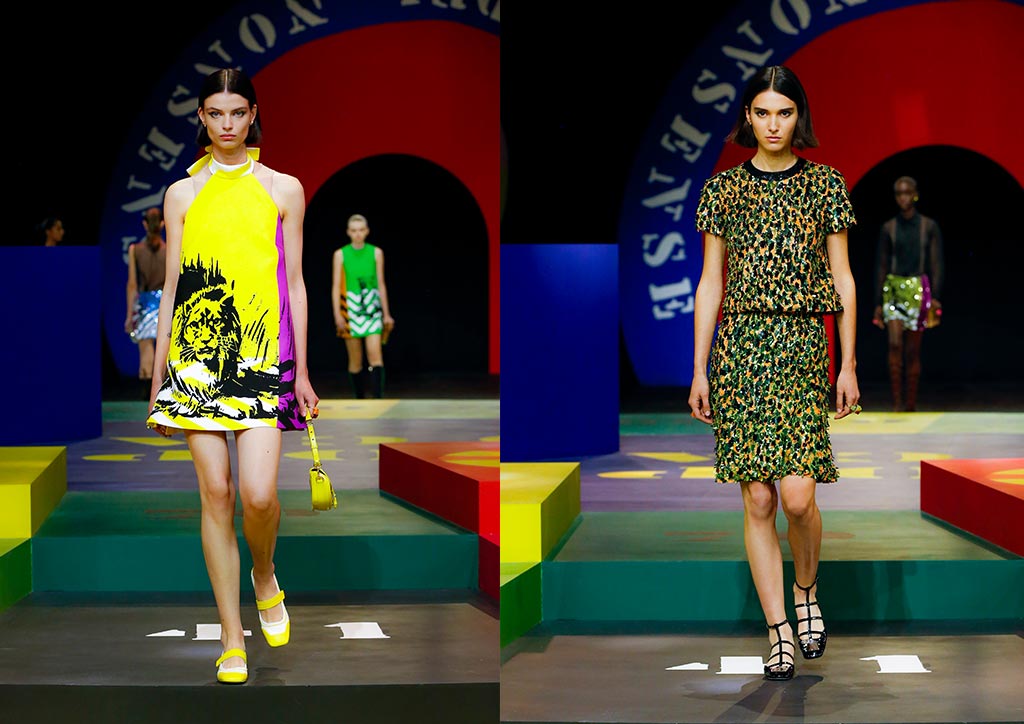
The silhouettes reveal cuts and graphic effects with color blocking. The hues also evoke spatial geometries and games by the Italian artist Anna Paparatti, who conceived the show’s scenography in an “absurdist” spirit that reflects the philosophy of her work. The materials and various motifs recall the legendary Roman nightclub, the Piper Club, a unique place for freedom of expression at the crossroads of art, design, and fashion.
Loewe
The Italian Mannerist painter Jacopo Carruci, or Pontormo, is the reference point for Jonathan Anderson’s SS 2022. The collection explores notions of draping, sculpting, and color by way or torsions, diversions, and distortions. This selection of a renaissance is perhaps appropriate given the House says it considers this line as an experimental statement and a “new beginning.”
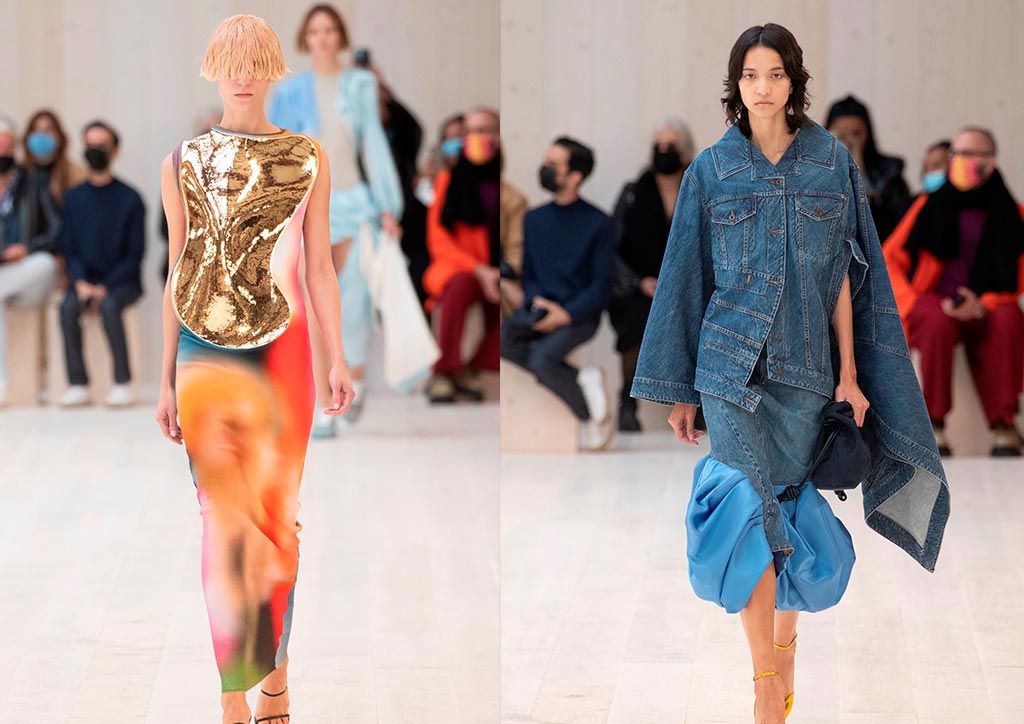
The line is vertical. The body is twisted, turned, contorted. Long dresses protrude in unexpected places, metal plates are integrated into coats and dresses, drawing an altered body, augmenting the reality of dressing into another dimension. Capes like wings define erotic manga characters, while draped elements hang, fall, turn all over. Denim, too, is treated in sculptural ways, while sequins and flounces are a moment of shimmer and flutter.
Balenciaga
While the presentation for the Spanish luxury house’s latest collection, which involved the amusing short film The Simpsons | Balenciaga, created a lot of buzz, Demna Gvasalia’s adamance for responsible production should also be noticed. This new line includes several accessory debuts, including The Space Shoe, a single mold alternative to the classic derby made out of EVA material.
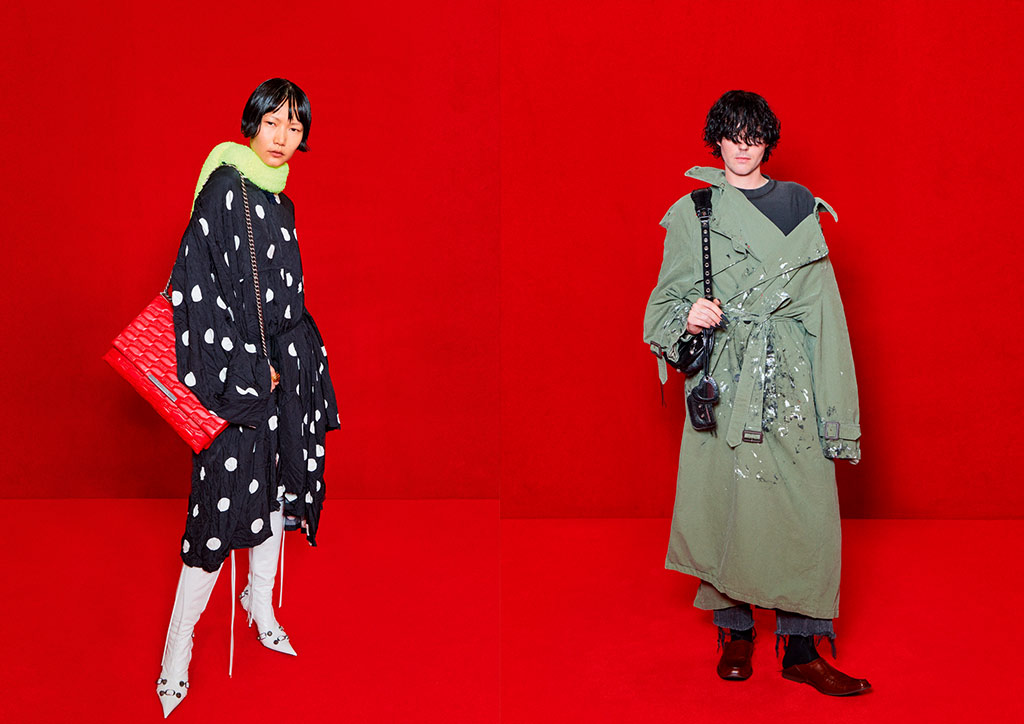
Other sustainability points in this line include upcycled denim, fine textiles, and embroidery as well as a plant-based leather made from a mix of fibers derived from cactus and bio polymers. About 95 percent of plain and printed fabrics in the collection are certified sustainable.
Fendi
For his sophomore RTW show at the Italian luxury house, Kim Jones marries joyful irreverence with his vision for its future. It is a present-time perspective on disco-age glamour, placing a spotlight on the diverse and powerful femininity that underscores the label. The starting point is a logo hand-sketched by fashion illustrator Antonio Lopez, which was unearthed from the Fendi archives.
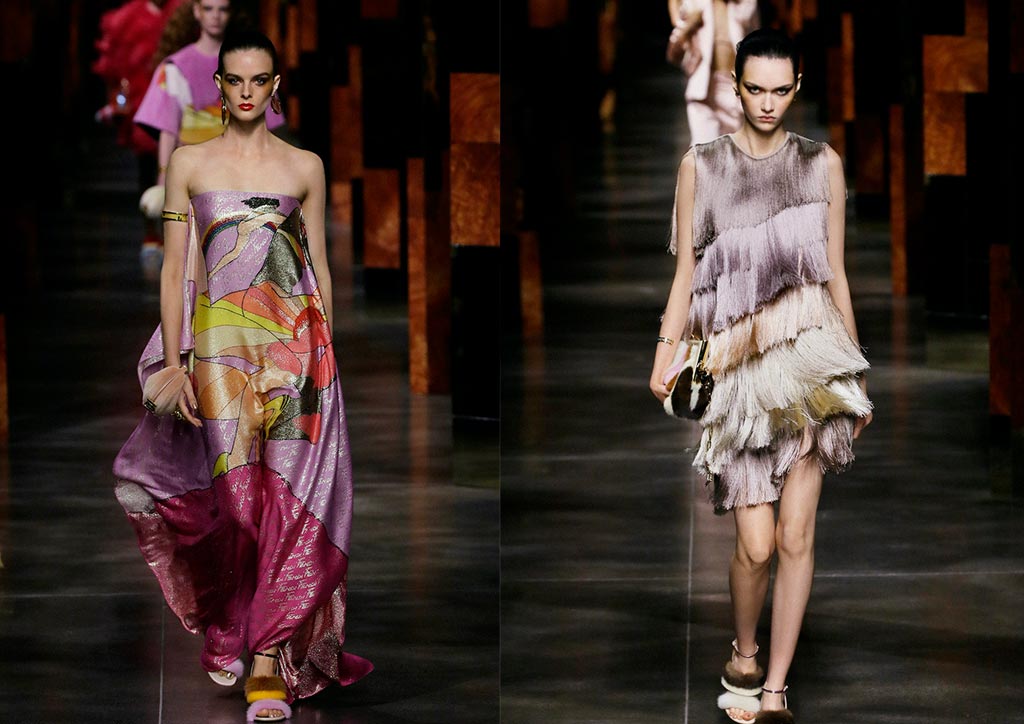
The new collection draws upon Lopez’s liberated sensibility and Studio 54 surroundings. His gestural brushstrokes appear in elegant abstraction across cream kaftans and silken shirting; his figurative drawings translated into intarsia leathers, intricately engineered lace and shimmering jacquards. Fendi bags also become canvases for Lopez’s art, from a Baguette tapestry woven into a rainbow to a Peekaboo transformed into a graphic work.
Salvatore Ferragamo
In its return to a physical fashion show, Ferragamo presented a collection inspired by 1960s and 1970s cinema, sensually soignée liberation, and the functionality of workwear. Key points include an Italianate rainbow colour-palette, natural hues and accents of saturated tones.
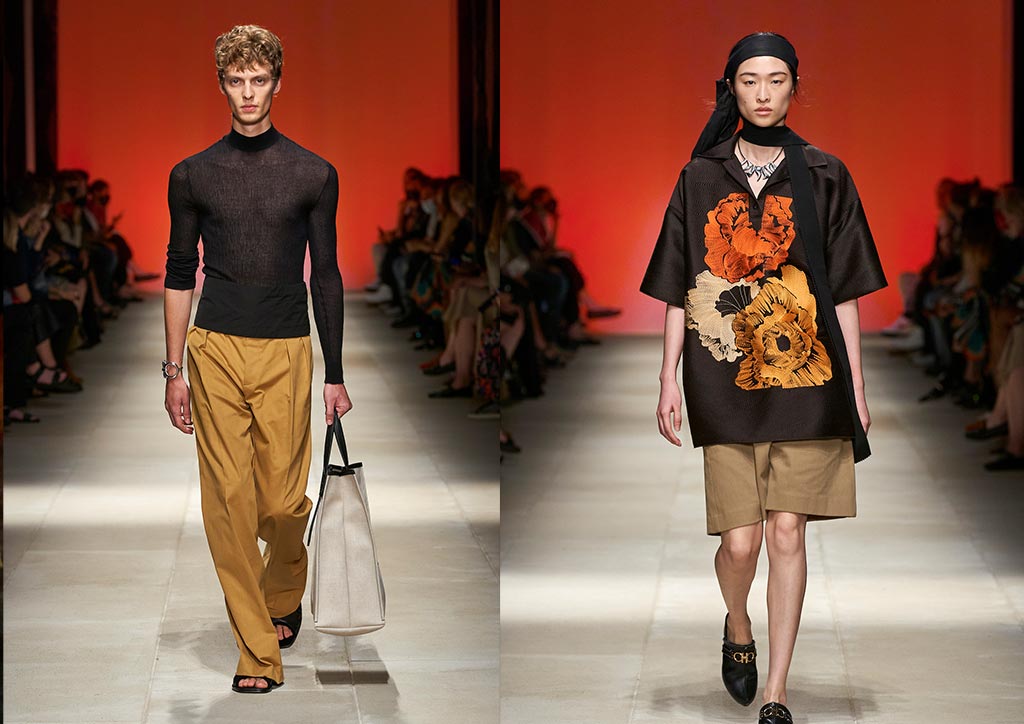
The brand went through its archives in search of worn stereotypes to transform, such as tiger print. An example of this is the collaboration with Parisian artist Julien Colombier that sees a repurposed 1970s Ferragamo floral foulard overprinted on a loose-yarn tiger-stripe jacquard, or fully embroidered using an old and typically Italian technique. Impactfully colored separates in knitand jersey, sometimes fringed, are worn with freedom. Tactile, textured fabrications combine cotton and silk, wool and linen, and hemp.
Givenchy
Matthew M. Williams opens the door to the future for French house by seeking out talent with unique perspectives, from the artist Josh Smith to the musician Young Thug. Williams’ Givenchy is a mix of luxury and utility, lavishness and austerity, together with imperfect beauty and humanity. It points to the distinctly emotional side of the business of luxury and fashion that is sometimes forgotten in its confines.
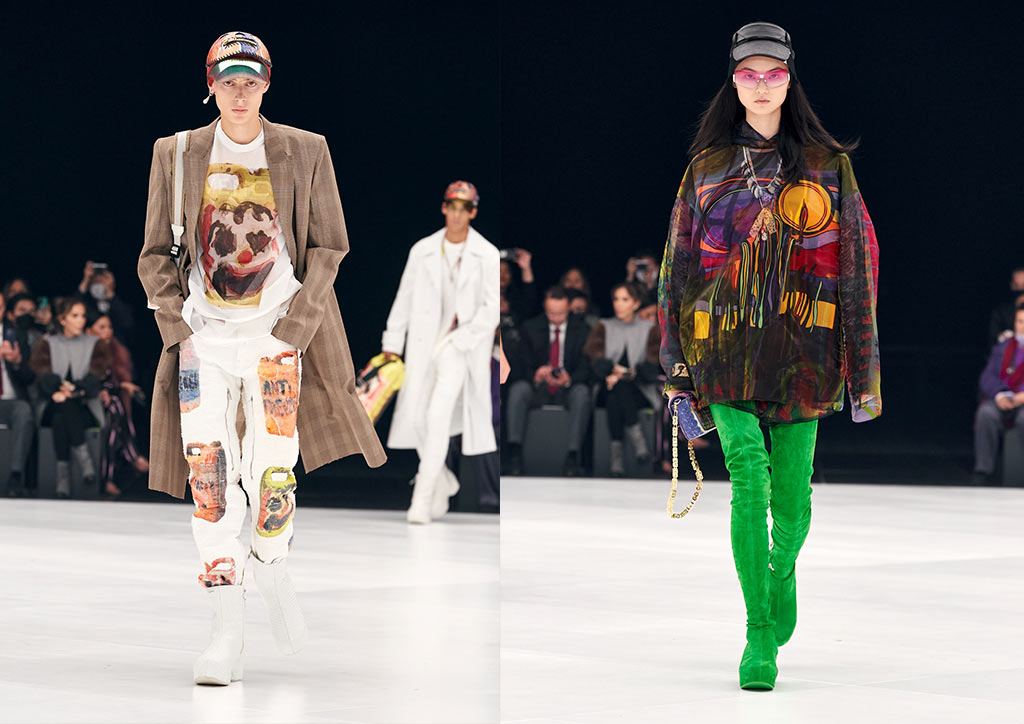
The silhouettes for both women and men explore the tensionbetween extravagance and discipline, tradition, and today. Material experimentation and construction of the silhouette is combined with an intense contrast in clothing that could only be achieved and exist now. Traditional masculine tailoring fabrics are featured in women’s and menswear, mohair wools, Napa leathers, cotton herringbones, and Prince of Wales checks are bonded with neoprene and sculpted in form, applied to both corsets and peplums from Monsieur de Givenchy’s archive.





